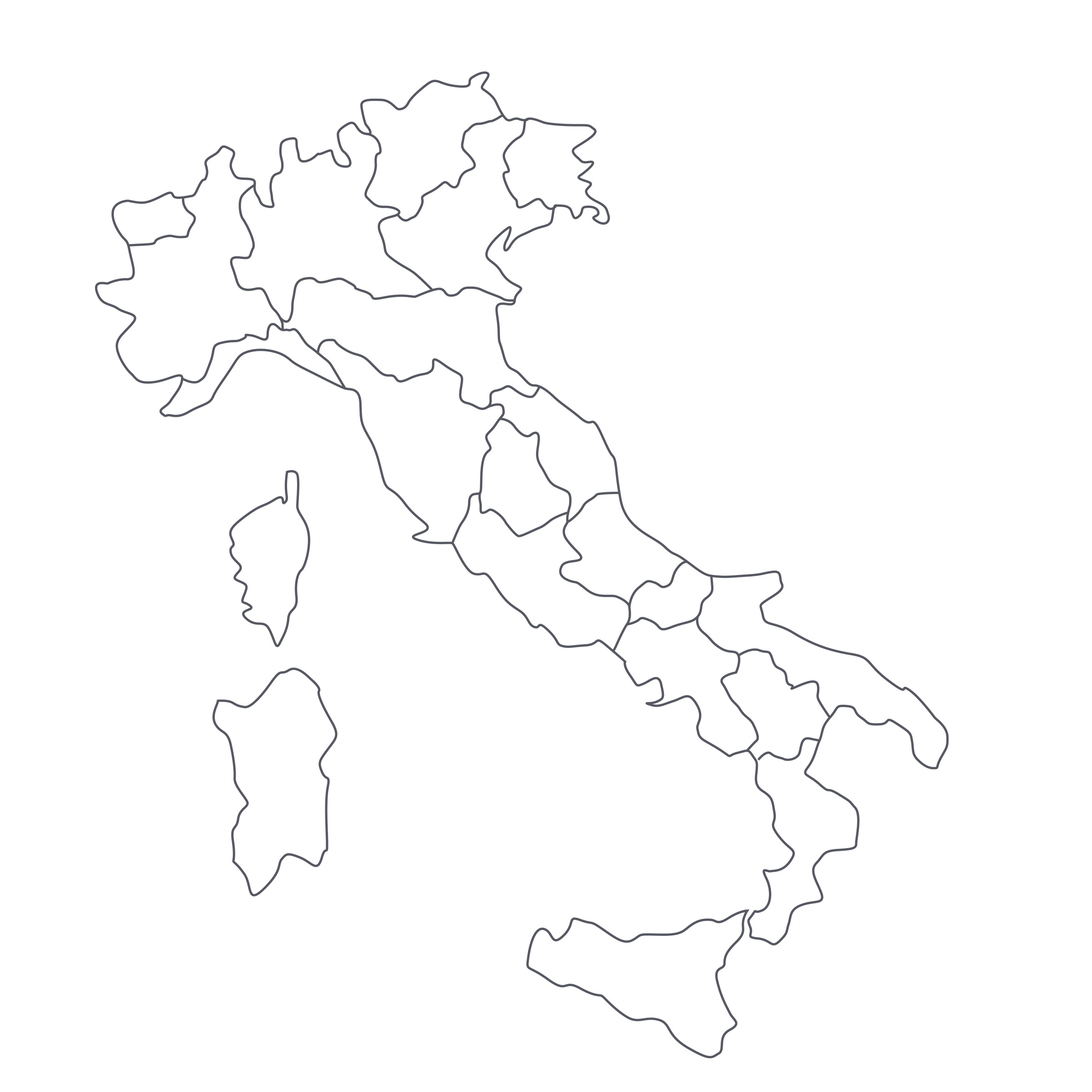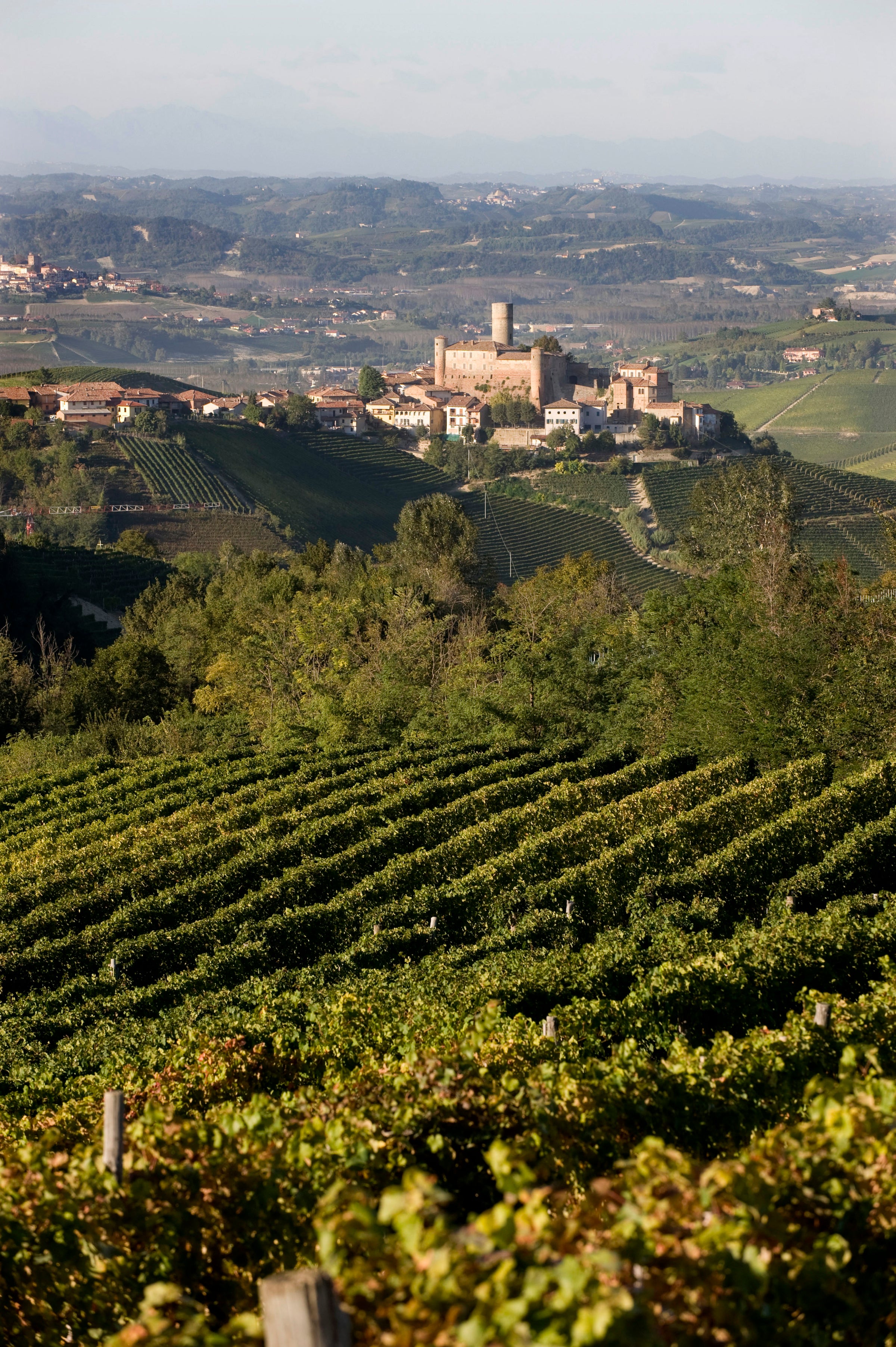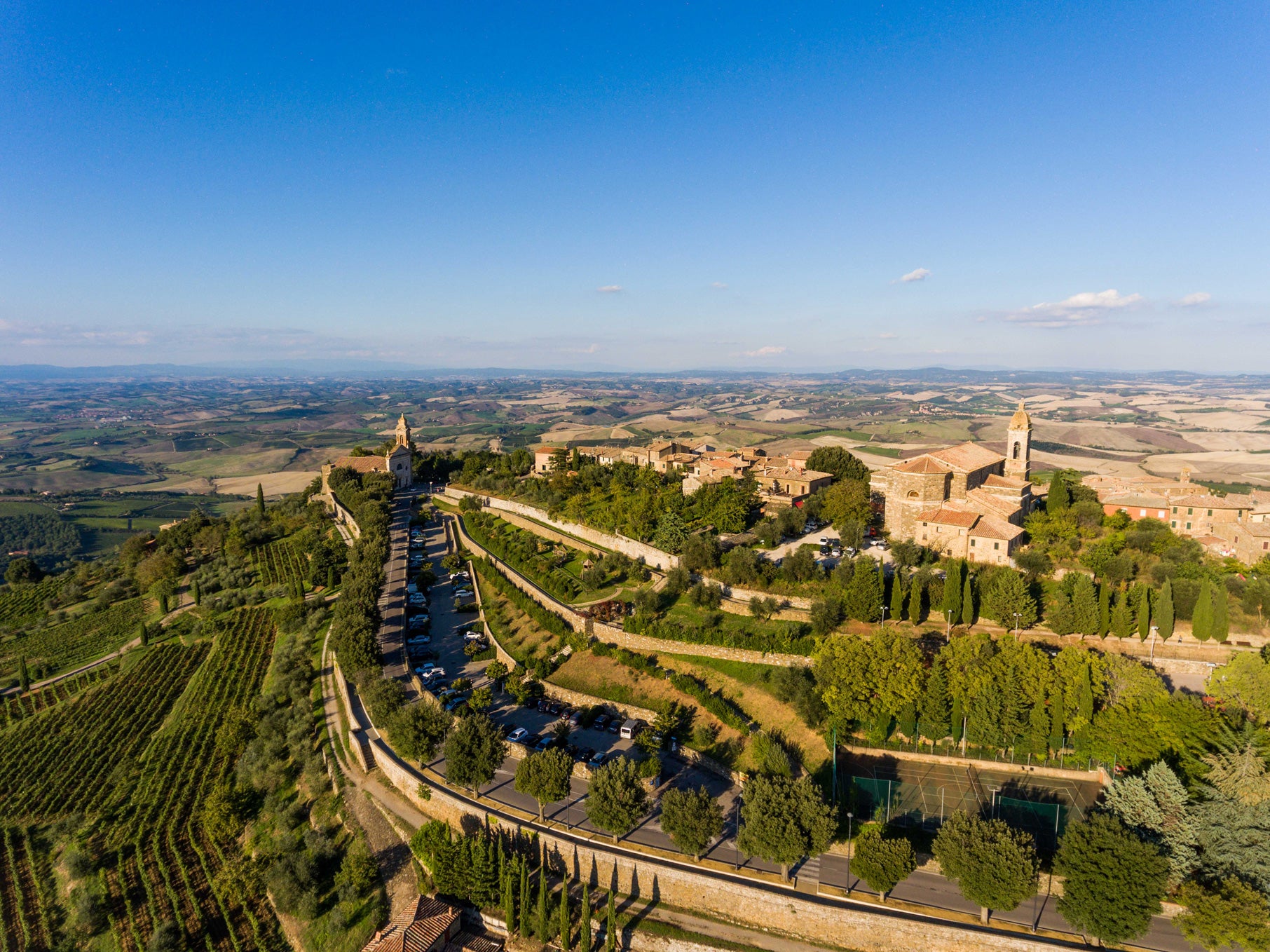SommSelect Editorial Director David Lynch is back in Tuscany, Italy, in the historic Vino Nobile di Montepulciano DOCG. Despite all the available evidence—and a winemaking history among the longest in the world—this region still doesn’t get the credit it deserves as a world-class terroir. This purebred Sangiovese from Il Macchione is consistently among the very best values in Tuscan wine today.
I don’t say this lightly: If I were to put together some wines which I felt epitomized what the Sangiovese grape can (and should) be, this wine would be on the table. We had another of these on offer recently (the 2012 “Baron’Ugo” from Monteraponi in Chianti Classico), and we’re getting ready to head off to Tuscany on a buying trip in a few days, so Sangiovese is top of mind for me right now. As Italy’s most-planted red grape variety, and one of its noblest, Sangiovese has been plenty parsed—even though most of its best-known appellations have chosen to present it as the dominant variety in a blend (like Cabernet Sauvignon in Bordeaux) rather than on its own as a ‘varietal’ wine (like Pinot Noir in Burgundy). I’ve grown to prefer the latter, varietal category of Tuscan Sangiovese—regardless of which “Big Three” region (Chianti, Montalcino, or this wine’s home, Montepulciano) it hails from. Because the Vino Nobile di Montepulciano DOCG appellation allows for blending (a minimum of 70% Sangiovese is what the law requires), there are many different expressions of this historic, if still-underappreciated, Tuscan red. Il Macchione is unambiguously, resolutely Sangiovese—100%—and to me a wine whose most appropriate analogs are not other Vino Nobile wines but the Brunellos of Montalcino to the southwest. I know it can get confusing: Montepulciano, Montalcino…some people use the names interchangeably even though the villages are 40 kilometers apart (and the wines usually further apart still). So let me repeat: This wine—from Montepulciano—will go head-to-head with any number of Brunellos—from Montalcino—costing twice as much. It is a study in Tuscan terroir and varietal character for less than $30. It must not be missed!
Among the Tuscan “Big Three,” Vino Nobile di Montepulciano is the smallest in terms of land under vine (about 1,300 hectares, which is marginally less than Montalcino and one-fifth the size of Chianti Classico). Situated southeast of Siena near Arezzo, the Montepulciano hills are a little broader and more open than the steep-pitched slopes of Chianti or Montalcino, and the Montepulciano soils are a little more sandy/sedimentary than the others. Montalcino, the driest, warmest and most southerly of the three, usually harvests first, while cooler, wetter Chianti is usually last. Conventional wisdom places Vino Nobile di Montalcino in the stylistic “middle ground” between the other two—neither quite as lean and mineral edge as most Chianti Classico nor quite as bold and extracted as the typical Brunello.
Technically speaking, both Vino Nobile and Chianti Classico are blends that are based on minimums of 70%-80% Sangiovese (although 100% is allowed), while Brunello is required by law to be 100% Sangiovese. In practice, all three regions (legally or not) became highly “internationalized” in the ‘80s and ‘90s, incorporating Cabernet, Merlot, Syrah, etc. into their wines and, in many cases, stomping all over the relatively delicate, perfumed Sangiovese in the process. Il Macchione is one of a growing number of producers to go in the opposite direction and double down on Sangiovese. The story in Tuscany these days isn’t the Chianti Classico or Vino Nobile dressed up with 15% Cabernet to give it an inkier color and softer edge (or the Brunello di Montalcino given similar treatment in secret); it’s about bringing pure expressions of Sangiovese to the fore.
Brothers Simone and Leonardo Abram, natives of Trentino, purchased Il Macchione in 2007, and have continued the work of previous proprietor Robert Kengelbacher, who’d been quietly turning out some of Montepulciano’s best wines since the 1980s. The Abram brothers have not only transitioned the entire farm to biodynamic viticulture but ripped up anything that wasn’t Sangiovese and replaced it in kind. At altitudes of about 350 meters in Montepulciano’s fossil-rich, sandstone-strewn Caggiole Valley, the Abrams are fanatical in their vineyard management, capturing not just Sangiovese’s perfume but its power. They make just two wines: this Vino Nobile, aged about 30 months’ total in a mix of cooperage (much longer than the law prescribes), and a riserva, which ages in wood a good 40 months before bottling.
If I were to characterize Sangiovese’s range of expressions, they would span from ethereal and Pinot-like (as in the “Baron’Ugo” from Monteraponi) to more structured, dense, and woodsy, like this 2012 from Il Macchione. In the glass it’s a deep garnet moving to crimson and brick at the rim, with an aromatic profile that makes you feel like you’re walking through a misty forest in the middle of fall: black cherry, raspberry, and tomato leaf mix with leather, tobacco, crushed stones, and underbrush. Medium-plus in body and well-structured, it has both the freshness and fine-grained tannin for aging—if you are drinking a bottle now, decant it about 45 minutes before serving in large Burgundy stems (I often go with Bordeaux stems for Brunello wines, and you’d be fine with one here, but the Burgundy style will highlight the wine’s perfume). While delicious and evocative now, this should really start peaking around 2020; it will absolutely reward cellaring, which is hardly typical at this price point, so don’t hesitate to stock up. It is a benchmark, and the perfect wine for the flavors of Fall—from poultry to meat to game. We’ve attached a gutsy, bacon-studded pasta to try; it’s from a little ways south in Rome but very much at home with this quintessential Tuscan red. Enjoy!
— D.L.




